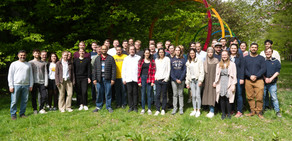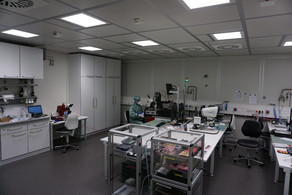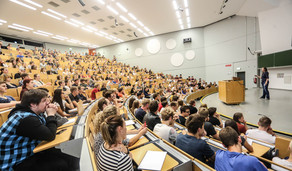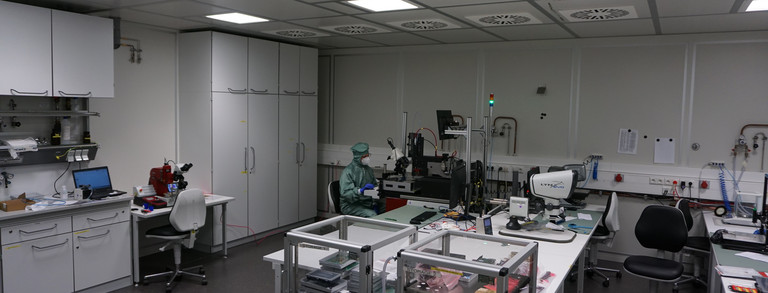Publikationen
2025
| M. Baselga et al. | Passive CMOS Strip Detectors for High Energy Particle Detection | NSS/MIC 2022 and 2022 IEEE NSS-MIC-RTSD |
2024
| M. Baselga Bacardit | TCAD Simulation of Stitching for Passive CMOS Strip Detectors | JINST 20 C01027 |
| N. Davis et al. | Characterisation and simulation of stitched CMOS strip sensors | Nucl. Instrum. Meth. A 1064 (2024) 169407 |
| I. Zatocilova | Characterisation, simulation and test beam data analysis of stitched passive CMOS strip sensors | Nucl. Instrum. Meth. A 1061 (2024) 169132 |
| M. Baselga Bacardit | Passive CMOS Strip Detectors Response with Alpha Particles, proceedings of the 32nd International Workshop on Vertex Detectors (VERTEX2023), 2023, Sestri Levante, Italy | PoS(VERTEX2023)067 |
| M. Baselga Bacardit | Silicon Detectors for Future Experiments – RD50 Status Report, proceedings of the 32nd International Workshop on Vertex Detectors (VERTEX2023), 2023, Sestri Levante, Italy | PoS(VERTEX2023)059 |
2023
| M. Baselga Bacardit | The ATLAS ITk Strip Detector for the Phase-II LHC Upgrade, proceedings of the 31th International Symposium on Lepton-Photon Interactions at High Energies, 2023, Melbourne, Australia | ATL-ITK-PROC-2023-010 |
| S. Pape et al. | Influence of temperature on measurements of the Two Photon Absorption – Transient Current Technique in silicon planar detectors using a 1550 nm femtosecond fibre laser | Nucl. Instrum. Meth. A 1053 (2023) 168387 |
| S. Pape et al. | Techniques for the Investigation of Segmented Sensors Using the Two Photon Absorption-Transient Current Technique | Sensors 23 (2023) 962 |
2022
| A. Almagro-Ruiz et al. | Fiber laser system of 1550 nm femtosecond pulses with configurable properties for the two-photon excitation of transient currents in semiconductor detectors | Appl. Opt. 61 (2022) 9386 |
| S. Pape et al. | First observation of the charge carrier density related gain reduction mechanism in LGADs with the Two Photon Absorption-Transient Current Technique | Nucl. Instrum. Meth. A 1040 (2022) 167190 |
| S. Pape et al. | Characterisation of irradiated and non-irradiated silicon sensors with a table-top two photon absorption TCT system | JINST 17 (2022) C08011 |
| T. Dado on behalf of the ATLAS Collaboration | Modeling Radiation Damage to Pixel Sensors in the ATLAS Detector | PoS(EPS-HEP2021)812 |
| L. Diehl et al. | Characterization of Passive CMOS Strip Sensors | [arXiv:2204.00501] |
2020
| P. Ahlburg et al. | EUDAQ—a data acquisition software framework for common beam telescopes | JINST 15 (2020) P01038 [arXiv:1909.13725] |
2019
| M. Wagner et al. | First Annealing Studies of Irradiated Silicon Sensors with Modified ATLAS Pixel Implantations | JINST 14 (2019) C11003 [arXiv:1908.10652] |
| F. Wizemann et al. | Temperature scaling of reverse current generated in proton irradiated silicon bulk | JINST 14 (2019) P07008 [arXiv:1904.04698] |
| R.F.H. Hunter et al. | First bulk and surface results for the ATLAS ITk Strip stereo annulus sensors | Nucl.Instrum.Meth. A 924 (2019) 142 |
| A. Gisen et al. | Investigation of modified ATLAS pixel implantations after irradiation with neutrons | Nucl. Instrum. Meth. A 924 (2019) 203 [arXiv:1802.00660] |
2018
| M. Weers et al. | Lab and test beam results of irradiated silicon sensors with modified ATLAS pixel implantations | JINST 13 (2018) C11004 |
| B. Abbott et al. | Production and Integration of the ATLAS Insertable B-Layer | JINST 13 (2018) T05008 [arXiv:1803.00844] |
2017
| A. Gisen et al. | Planar n-in-n quad module prototypes for the ATLAS ITk upgrade at HL-LHC | JINST 12 (2017) C12032 [arXiv:1708.08266] |
2016
| K. Dette | Total Ionising Dose effects in the FE-I4 front-end chip of the ATLAS Pixel IBL detector | JINST 11 (2016) C11028 |
| N. Tehrani et al. | Capacitively coupled hybrid pixel assemblies for the CLIC vertex detector | Nucl. Instrum. Meth. A 823 (2016) 1 |
| K. Kimura et al. | Test beam evaluation of newly developed n-in-p planar pixel sensors for use in a high radiation environment | Nucl. Instrum. Meth. A 831 (2016) 140 |
| R. Klingenberg et al. | Power dissipation studies on planar n+-in-n pixel sensors | Nucl. Instrum. Meth. A 831 (2016) 105 |
2014
| M. Motohashi et al. | Evaluation of KEK n-in-p planar pixel sensor structures for very high radiation environments with testbeam | Nucl. Instrum. Meth. A 765 (2014) 125 |
| R. Klingenberg et al. | Temperature-dependent characterizations of irradiated planar n+-in-n pixel assemblies | Nucl. Instrum. Meth. A 765 (2014) 135 |





